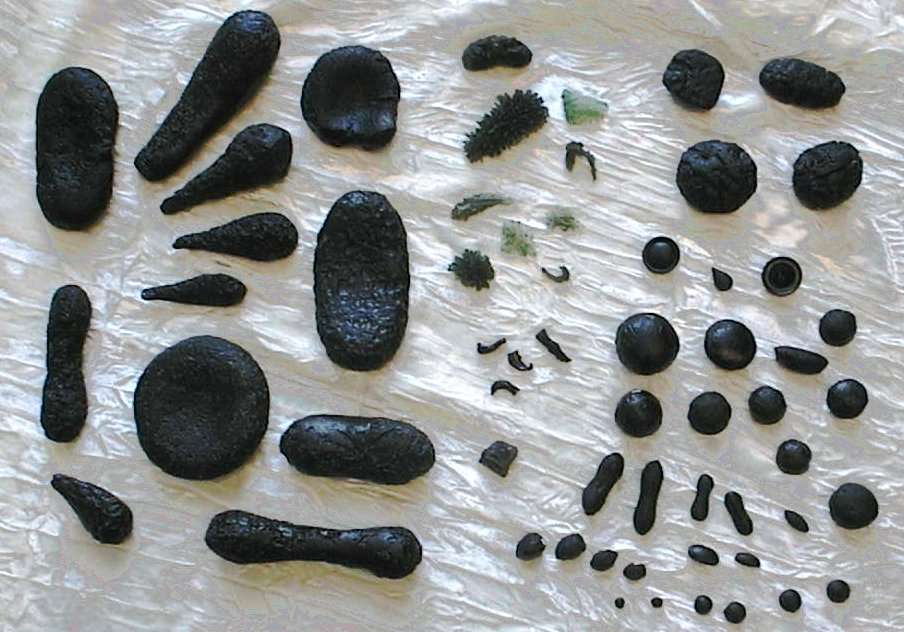|
"Tektite" is Greek for "molten", an appropriate name, as tektites are a product of meteor impact with earth where pure quartz sand was present.
The tremendous heat and pressure of the impact produced a splash effect of the quartz sand and other earth materials as high as outer space, that then fell as fused glass into "strewn fields".
Most tektites are opaque with smooth, scarred or pitted surfaces. It looks similar to volcanic obsidian but due to the high melting threshold (over 1300 degrees C.) and fractures evident in every molecule of the tektite, it is understood to have been created by a violent impact and propelled some distance.
Tektites are similar to shale in composition, but have a very low water content of .005% (volcanic material is generally .25% water).
Below are examples of tektites
 
Strewn fields of tektites are found in Eastern Europe, Thailand, Southeast Asia, Australia and even in the state of Georgia in the United States.
It has also been found that all these tektites can be associated with nearby meteorite impact points that created them, bearing the same age as the original impact from the meteorite.
However, where no pure quartz sand was present when a meteorite fell, no tektites were created.
Tektites are found in two distinct shapes:
1. rounded aerodynamic shapes, spheres, tear droplets, dumbbells & disks formed closer to ground zero of the impact.
2. Layered or "Muong-Nong" type found only in SE Asia are blocky, fragmental shapes with layering and variations in bubble content, understood to be further from ground zero of impact. Some larger pieces have a surface like lava or "breadcrust" lava bombs.
|